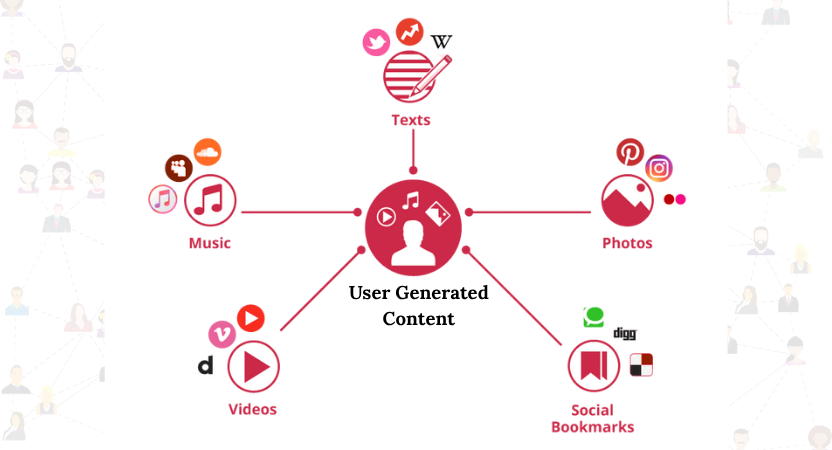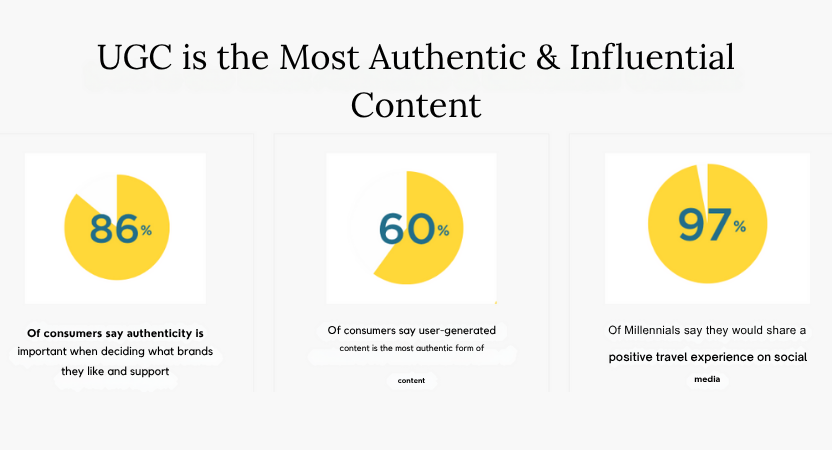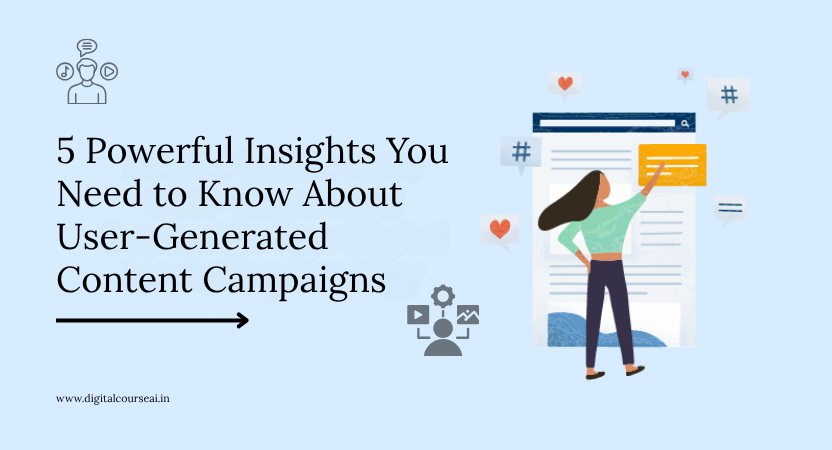Introduction
We don’t trust ads the way we used to. Today, we trust people, friends, influencers, and even strangers who share their real-life experiences with brands online. This shift has given rise to a powerful marketing force known as User-Generated Content (UGC). Whether it’s an Instagram story, an unboxing video, a product review, or a testimonial, user-generated content (UGC) builds trust and creates genuine connections that no traditional ad can match.
Brands across the globe are now actively running user-generated content campaigns to invite customers and creators to share their own stories, turning them into promoters. But UGC isn’t just a trend; it’s a long-term strategy that has become a must in every marketer’s toolkit. If you’re learning digital marketing or planning to grow your brand, this is one concept you can’t ignore.At Digital CourseAI, our advanced digital marketing course trains students to understand, implement, and master UGC strategies alongside influencer marketing, content creation, and campaign analytics. Here’s everything you need to know about user-generated content campaigns, how they work, and why your brand needs them now more than ever.
Types of UGC
User-generated content comes in many forms. From social media posts to blog reviews, from YouTube vlogs to testimonials, the types of UGC are diverse and valuable. Here are the most common types you should know:
- Text Reviews: These include written testimonials on Google, Amazon, or e-commerce sites. They build credibility and influence buying decisions.
- Images & Photos: Instagram or Facebook photos where users share their experience with your product.
- User-Generated Content Videos: One of the most powerful types of UGC. These could be unboxing videos, product demonstrations, or casual use-case stories.
- Social Media Mentions: Tweets, Facebook posts, or Instagram stories tagging your brand with feedback or praise.
- Blogs or Articles: Customers or influencers who write about your service or product in-depth.
- Q&A Responses: Platforms like Quora or Reddit, where users answer questions about your product, act as UGC indirectly.
Each type carries its unique weight in a campaign. Videos, for example, have the highest engagement, while reviews and testimonials work better for conversion. With the right tools and strategy, you can mix and match these types to run impactful user-generated content campaigns.
Who Creates User-Generated Content?

You don’t need a celebrity or mega influencer to create UGC. In fact, everyday customers are the true heroes of user-generated content. Here are the common UGC creators:
- Customers: The most authentic source. Happy customers who voluntarily share photos, reviews, or videos after a positive experience.
- UGC Creators: These are freelance creators who specialise in producing content for brands. They’re not necessarily influencers, but they understand how to make authentic-looking content that resonates.
- Influencers: Nano and micro-influencers are often tapped for UGC. Their content feels natural, not overly produced, and is relatable to their niche audience.
- Employees: Employee-generated content can also be powerful. Behind-the-scenes photos, team shoutouts, and internal stories can be used externally for brand-building.
- Loyal Brand Advocates: Long-term customers who always buy your products and openly support your brand on social media.
Today, many brands are building relationships with UGC creators specifically. These individuals are trained to make authentic yet high-quality content that blends naturally into social feeds. As part of our advanced digital marketing course at Digital CourseAI, we guide students on how to identify, connect with, and collaborate with UGC creators effectively.
Strategic Integration of User-Generated Content with Digital Marketing Campaigns
So, how do you use UGC to actually power your marketing? The real magic of user-generated content campaigns lies in how well they are integrated into your digital strategies. UGC works best when combined with paid ads, social media marketing, influencer marketing, SEO, and email marketing.
1. Social Media Campaigns: UGC thrives on platforms like Instagram, TikTok, and YouTube. Brands often create hashtags to encourage users to participate. For example, Nike’s #JustDoIt or Coca-Cola’s #ShareACoke campaigns were built largely on UGC. Encourage your audience to tag your brand or use your campaign hashtag in return for recognition or rewards.
2. Paid Ads with UGC: UGC performs better than polished ads. That’s because people trust people. Showing real users in your Facebook or Instagram ads can increase click-through rates and reduce ad fatigue.
3. Website Content: Add user testimonials, UGC videos, or reviews to your homepage, product pages, or landing pages. It increases time spent on site and boosts credibility.
4. Email Marketing: Featuring UGC in emails, like user photos or stories, can make your emails feel more personal and increase engagement.
5. Influencer UGC: Influencer marketing works beautifully with UGC when influencers act like customers. It blends their creativity with your product to create content that’s genuine and attractive.
6. SEO & Blogs: Add UGC content examples in your blog strategy. Showcase how real users are benefiting from your services. This not only builds trust but also improves search visibility.
7. Brand Contests and Giveaways: Brands often run content contests to collect mass UGC. A giveaway where participants post their own content increases reach and gathers loads of UGC in a short time.A key platform that supports all of this is a user-generated content platform. These tools help you collect, organise, and repurpose UGC efficiently. Some examples include Yotpo, TINT, and Pixlee. If you want to master UGC integration, make sure you’re learning on the right platform—and that’s what Digital CourseAI offers through its hands-on training modules.
Why UGC Content is Good for Your Brand

UGC isn’t just affordable; it’s highly effective. Brands benefit from user-generated content in many ways:
1. Builds Trust: People trust real people. UGC helps reduce doubts and increases conversions.
2. Increases Engagement: UGC videos and images drive higher likes, shares, and comments.
3. Boosts Reach: When users tag your brand, their followers see it too. This spreads your brand organically.
4. Cost-Effective: You don’t have to pay for large production teams or studios. Users create content for free or at a much lower cost.
5. Helps in Product Development: Feedback through UGC gives insights into what users love or what needs improvement.
Let’s take some real UGC content examples. GoPro encourages users to upload their adventure videos, which they later feature on official social channels. Another example is Airbnb, which uses host and traveller photos in campaigns, making their content more relatable. These real moments sell better than stock images ever could.
Students at Digital CourseAI learn how to research and analyse such examples of user-generated content as part of their curriculum. This helps them design strategies that are data-backed and customer-centric.
How to Add the Power of UGC to Your Workflow
Ready to use UGC for your brand? Here’s a simple way to get started:
- Plan the Campaign: Define the objective. Do you want content for social media? Website? Ads?
- Choose a Platform: Pick a User-Generated Content Platform to manage submissions and display content.
- Reach Out to UGC Creators: Find users who are already talking about you or reach out to freelancers who can create content for you.
- Run a Campaign: Launch with a hashtag, challenge, or contest. Promote it across your digital channels.
- Feature and Appreciate: Share user content across your touchpoints. Tag them, appreciate them, and build loyalty.
- Analyse Performance: Check which content type or creator worked best. Use the insights to improve your future campaigns.
By adding UGC to your daily workflow, you not only increase visibility but also gain authentic content that connects emotionally. The best part? It keeps coming. Once you start building a community, UGC becomes a steady stream of content.At Digital CourseAI, students don’t just learn theory—they create real campaigns, track results, and learn how UGC in digital marketing can create long-term brand equity.
Conclusion
In 2025 and beyond, content that feels real, honest, and engaging will lead the game. User-generated content campaigns are not just a trend but a key to brand loyalty and online influence. To truly unlock the power of UGC, one needs the right training, tools, and mindset. That’s where Digital CourseAI steps in, offering an advanced digital marketing course that covers everything from campaign strategy to UGC management, influencer outreach, and analytics.
If you’re planning to build a career in digital marketing or grow your brand online, it’s time to take UGC seriously. And there’s no better place to begin than learning from the experts at Digital CourseAI. Follow us on our social media channels to read more such insightful blogs and stay updated with the latest in digital marketing.

